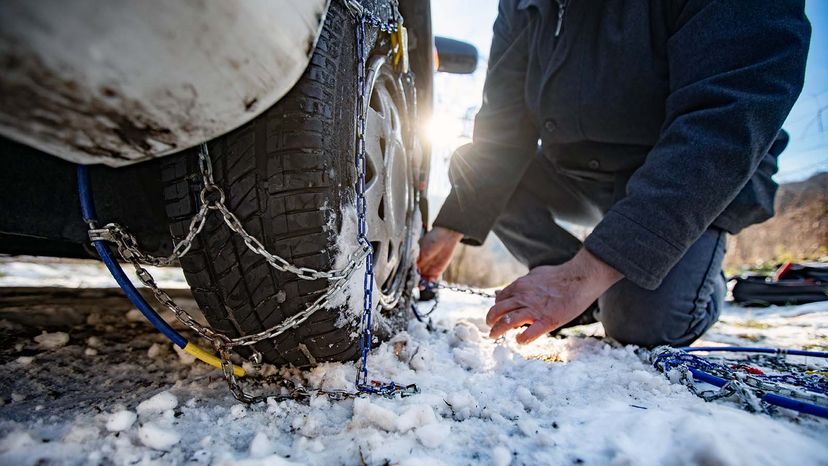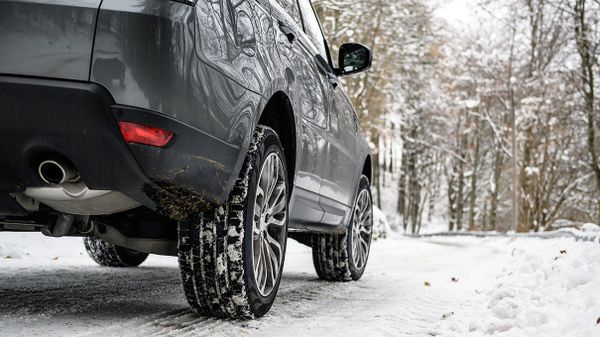
Winter driving can be dangerous when snow packs into the tread of your tires or black ice covers the road. In both cases, your car can lose traction. One option for driving on snow and ice is putting chains on your tires.
Follow these tips when buying tire chains:
Advertisement
- Find out if tire chains are legal: In some areas, tire chains aren't permitted for use. Even in snowy areas, they're usually illegal some months of the year. Contact your local authorities to find out the regulations.
- Buy the right chains: Tire chains need to fit your tires, and your car needs to have enough clearance to accommodate the chains once they're on. You'll also need trunk or cargo space for carrying the chains.
You need to put on your chains according to the manufacturer's instructions, but here's a general guide you can follow:
- Determine which tires to put the chains on: Only put chains on the drive wheels. If you have a front-wheel-drive vehicle, only put chains on the front tires [source: The Manual]. If you have all-wheel drive, check your owner's manual to see which set of tires is appropriate, or if the car can accommodate chains on all four tires [source: Etrailer].
- Find a flat area to install the chains: There will likely be pull-outs along the road for putting on chains. Spread out the chains on level ground, making sure they are flat.
- Start putting on the chains: Put the chain over the top of the tire, then hook or clamp them together on the side of the tire facing you.
- Drive over the chains: Depending on the kind of chains you have, you might need to roll the car forward a few feet to finish hooking the chains on.
- Tighten the chains: After installing your tire chains, drive about 15 feet (5 meters) and then tighten the chains. This will increase their effectiveness and save your wheel wells from damage.
Driving with chains on your tires isn't like driving under normal conditions. So keep in mind the following:
- Accelerate and decelerate slowly: Slow speeds are key to driving with chains, so follow manufacturer's recommendations and posted speed limits. You usually shouldn't drive more than about 30 miles per hour (13.4 kilometers per hour) with chains on. Going faster can defeat the purpose of gaining traction, and it can damage your car.
- Never drive on broken chains: Immediately stop your car if a chain falls off or breaks. Reattach or fix the chain if possible. Otherwise, take the chains off and drive exceedingly carefully without them. Broken chains act like a flail beating on your car with every rotation of the tire.
- Never drive with chains on clear roads: As soon as you've cleared the snow, remove your tire chains. Chains may destroy your tires — and the roads — if you drive with them on clear surfaces [source: NAPA].
Advertisement

